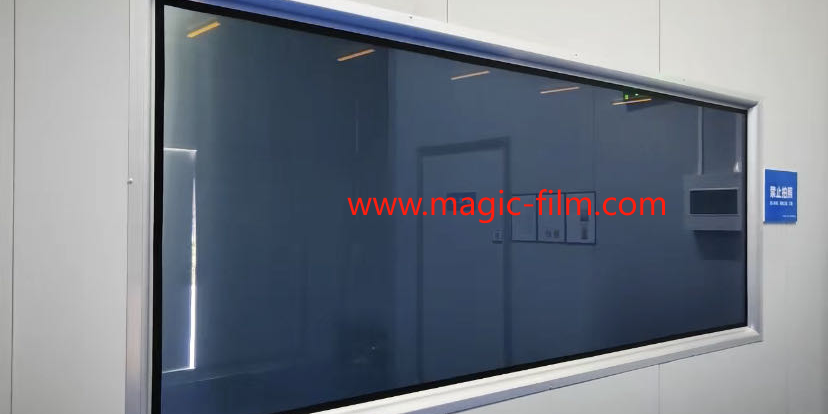Reverse PDLC (Polymer Dispersed Liquid Crystal) film is a specialized type of smart film that operates opposite to traditional PDLC film. While traditional PDLC film becomes transparent when an electric current is applied, reverse PDLC film becomes opaque when powered. This unique behavior can be advantageous for certain applications where privacy is the default state and transparency is needed only on demand.
How Reverse PDLC Film Works
Opaque State (Power On):
Mechanism: When an electric current is applied, the liquid crystals align in such a way that the film scatters light, making the film appear opaque or frosted.
Privacy: Provides full privacy when powered.
Transparent State (Power Off):
Mechanism: Without an electric current, the liquid crystals are randomly oriented, allowing light to pass through and making the film transparent.
Visibility: Allows clear visibility through the glass when not powered.
Key Features of Reverse PDLC Film
Default Privacy:
Opaque When Powered: Ensures privacy as the default state when power is applied, which can be beneficial in scenarios where privacy is crucial at all times unless explicitly changed.
Fail-Safe Design: If the power supply fails, the glass remains transparent, which might be preferable in certain safety or emergency scenarios.
Light Control:
Natural Light Utilization: Allows natural light to enter the space when transparent, reducing the need for artificial lighting.
Glare Reduction: Helps reduce glare from direct sunlight when opaque, enhancing comfort.
Energy Efficiency:
Thermal Regulation: Helps control indoor temperatures by reducing heat gain in the summer and heat loss in the winter.
UV Protection: Blocks harmful UV rays, protecting interiors and reducing fading of furnishings.
Aesthetic Appeal:
Modern Design: Offers a sleek and contemporary look that enhances the overall aesthetic of the building.
Customizable: Available in various colors, tints, and finishes to match the design preferences of different environments.
Enhanced Comfort and Wellbeing:
Improved Indoor Environment: By controlling light and temperature, it creates a more comfortable and pleasant indoor environment.
Health Benefits: Provides a healthier living and working environment by allowing natural light to enter while maintaining privacy.
Noise Reduction:
Sound Insulation: Provides effective sound insulation, creating a quieter indoor environment.






